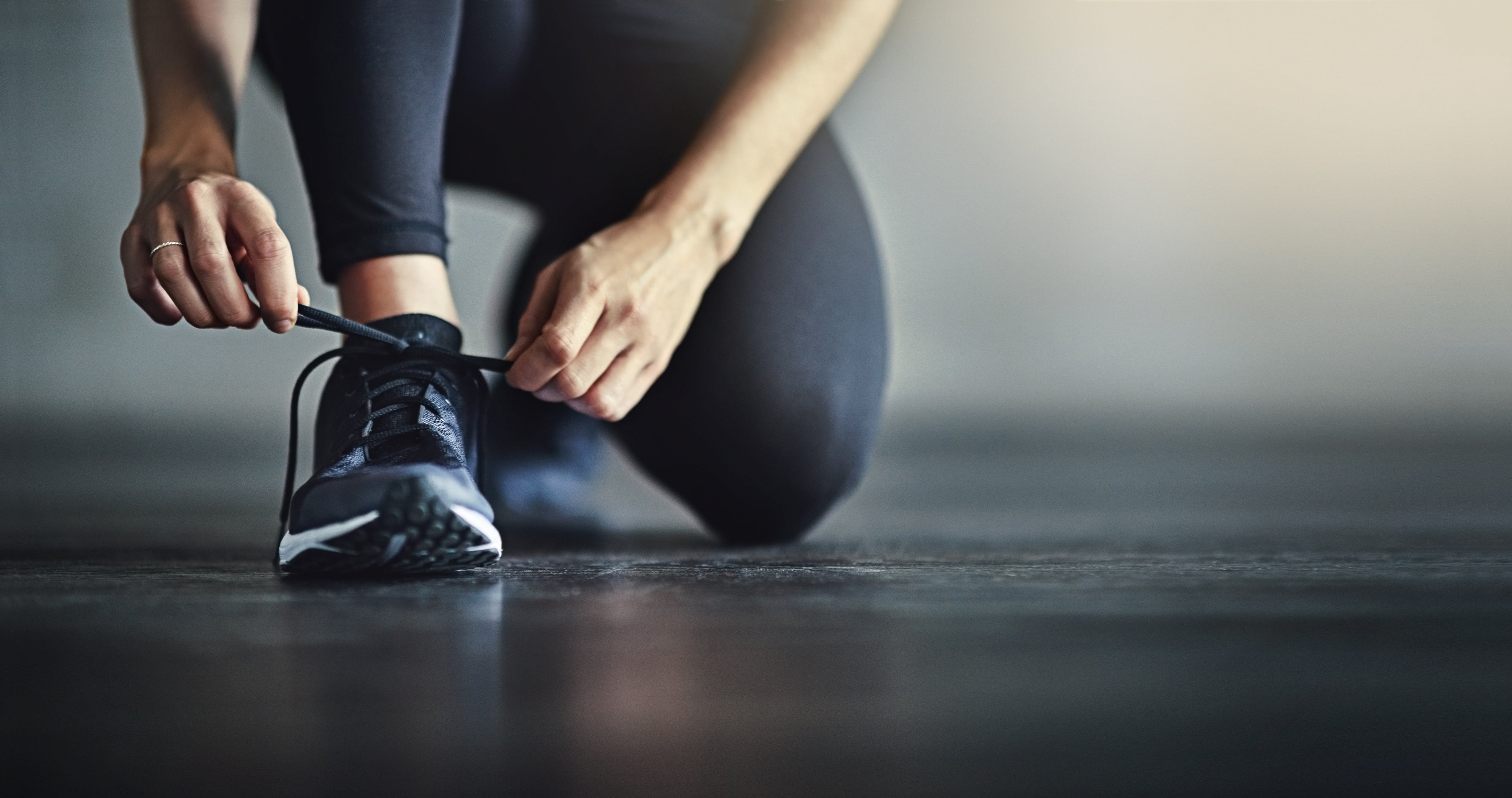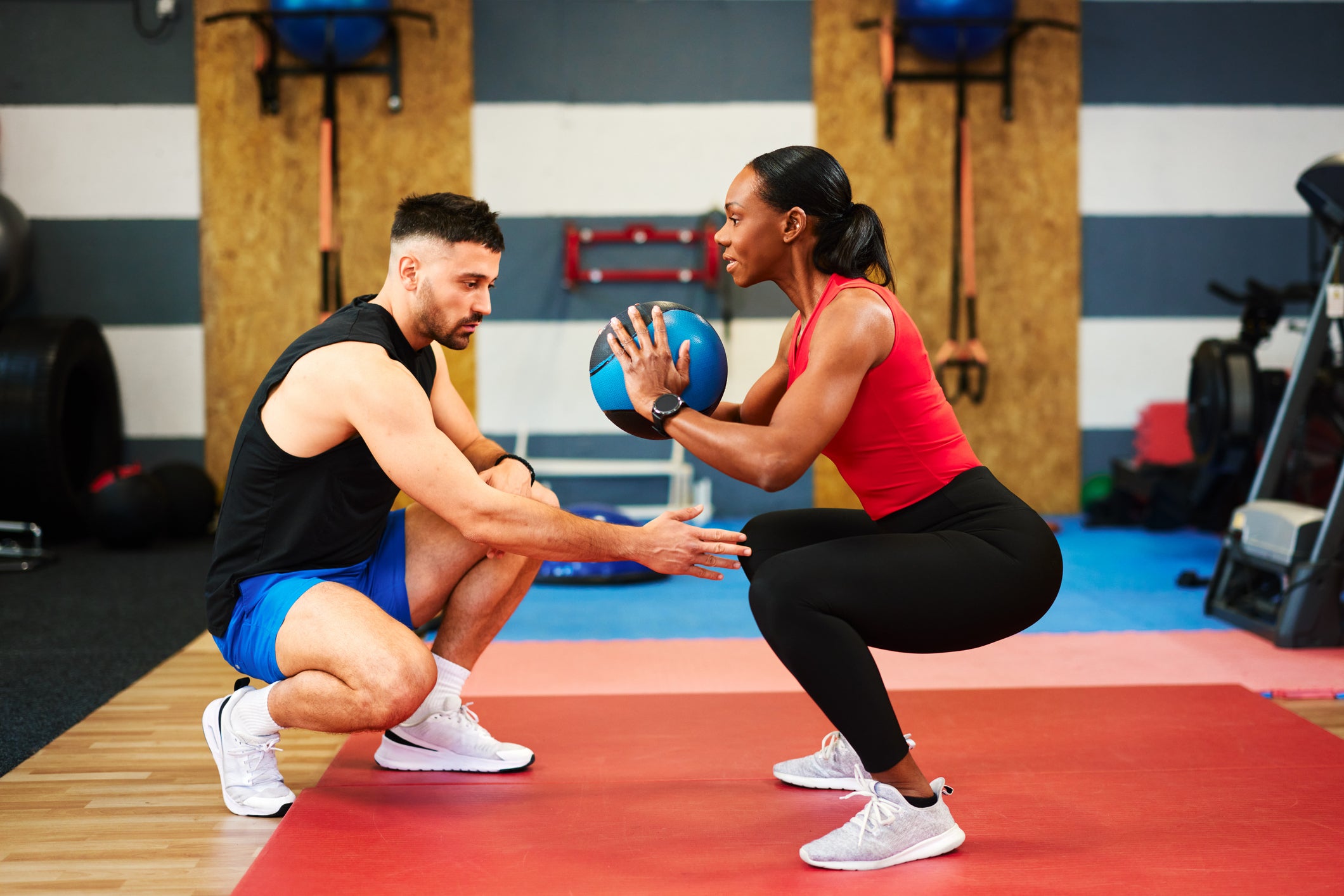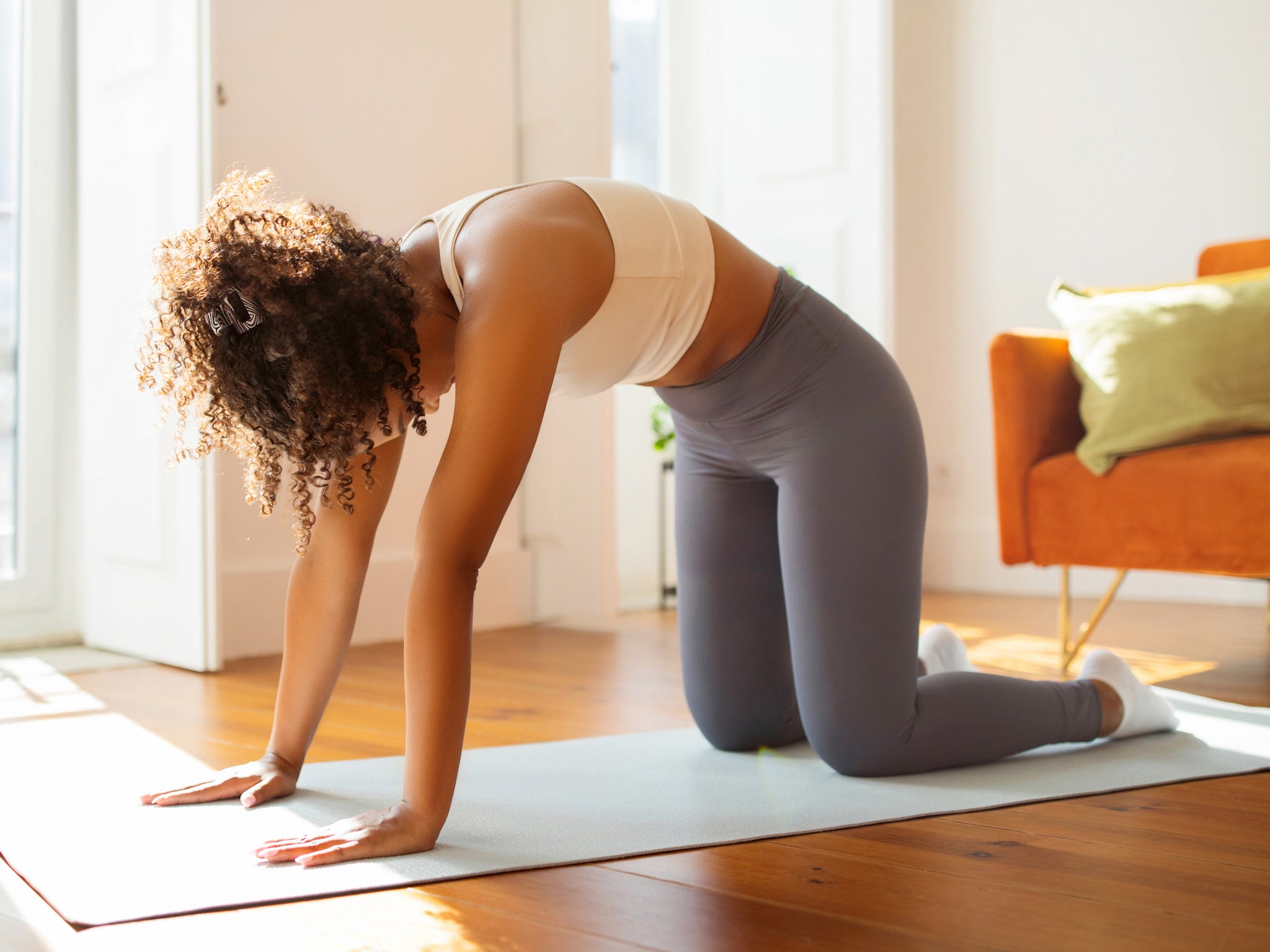
Turning 40 is a big moment for most people. On the face of it, this birthday simply represents another successful lap around the sun, but reaching your fourth decade is widely viewed as an entry point to midlife.
Hitting your 40s also presents the potential for unfavourable changes to one’s body – a decline in muscle strength and endurance, increased life stresses and a dip in flexibility.
“People over 40, across all demographics, have a higher risk of developing Type 2 diabetes,” says Jonathan Robinson, applied sports scientist at the University of Bath.
“Cholesterol and other cardiovascular risk factors become more significant. Lung function begins to decline after the age of 35, so this can become more noticeable for people in their 40s. And bone density issues [are more common], particularly in women due to hormonal changes after menopause.”
This doesn’t make for pleasant reading. However, all of these factors can be countered by building or maintaining higher fitness levels. Below, Robinson and longevity-specialist personal trainer Ollie Thompson share the simple tests you can use to determine how fit you are for your age and how to improve.
“The following tests provide an accessible way to assess key areas of fitness at home or in the gym,” says Thompson. “Each one targets a different component of fitness such as strength, muscle endurance, cardio capacity, stability, flexibility and balance.
“They also include scoring systems so you can see where you stand currently, and how much improvement you’ll need to take your fitness to the next level.”
Fitness tests for people in their 40s
Testing VO2 max
Your VO2 max is the maximal amount of oxygen you can take in and use during exercise. This objective measurement is a good signifier of cardiovascular fitness, aerobic endurance, exercise performance, longevity and heart and lung health. Higher scores have also been linked to a lower risk of non-communicable disease such as obesity, diabetes, high blood pressure, heart disease and various forms of cancer.
“VO2 max testing in a lab is the gold standard, but there are tests that can be done using minimal equipment,” says Robinson.
Test 1: Cooper run
After a thorough warm-up, run as far as you can in 12 minutes. Use the flattest course possible.
Score rating for people in their 40s |
Men |
Women |
Poor |
Under 1,400m |
Under 1,200m |
Average |
1,700-2,099m |
1,500m-1,899m |
Excellent |
Over 2,500m |
Over 2,300m |
Test 2: Rockport one mile walking test
Find a flat one-mile walking route – ideally a running track. Perform a light warm-up, then walk the route as quickly as possible. When you have covered 1,609m, record the time it took you to complete the course and your heart rate, either manually or using a heart rate monitor worn throughout the test. Use the equation below to calculate your VO2 max.
VO2 max = 132.853 – (0.0769 × body weight in pounds) – (0.3877 × age) + (6.315 ×1 for men or 0 for women) – (3.2649 × time taken to complete the walk) – (0.1565 × heart rate).
Score rating for people in their 40s |
Men |
Women |
Poor |
Under 31 |
Under 24 |
Average |
36-43 |
30-39 |
Excellent |
Over 48 |
Over 46 |
Test 3: Harvard step test
Step on to a platform (50.8cm for men, 40cm for women) 30 times per minute for five minutes, or until exhaustion. Use a metronome to ensure you are taking one second for the step up and one second for the step down. Exhaustion is reached when you cannot maintain this cadence for 15 straight seconds.
Feeling your pulse at your wrist, record the number of heart beats that occur between 60 seconds and 90 seconds after the test, between 120 and 150 seconds after the test, and between 180 and 210 seconds after the test. Use the equation below to calculate your fitness index score.
Fitness Index = (100 x test duration in seconds) divided by (2 x sum of heart beats in the recovery periods).
Score rating for people in their 40s |
All |
Poor |
Under 54 |
Average |
68-82 |
Excellent |
Over 96 |
Read more: I tried the Royal Navy’s new fitness test – and it wasn’t what I expected

Testing strength
Strength is the body’s ability to exert force to overcome resistance, and it underpins every movement we do as humans; we cannot get up out of a chair or walk if our leg and core muscles aren’t strong enough to move our body weight. However, unless preventative actions are taken, strength and muscle mass can decrease with age, starting in our 30s.
“Muscle mass will naturally decrease – a process known as sarcopenia – and muscle strength and power decline even more rapidly than the muscle tissue itself,” says Thompson.
“Your 40s are the ideal time to reclaim control and lay the foundation for healthy aging by building something I like to call physiological headroom – essentially, a health buffer.
“By focusing on muscle preservation, cardiovascular fitness, strength, mobility, stability and power, you can elevate your physical capacity to a level where, in your 50s, you can ease off the pedal and still maintain high levels of fitness and function well past retirement with only a minimal exercise routine.”
Test 4: Wall Sit Test
Stand with your back against a wall and your feet hip-width apart. Pushing your back against the wall, walk your feet out and slide down the wall until your knee forms a right angle – your shins should be vertical and your thighs should run parallel to the ground. Hold this position for as long as you can, without touching your thighs or your knees with your hands.
“This activity tests your isometric leg strength and endurance,” says Thompson.
Score rating for people in their 40s |
All |
Poor |
Under 45 seconds |
Average |
50-60 seconds |
Excellent |
Over 90 seconds |
Test 5: Modified farmer’s carry test
Hold a dumbbell or kettlebell in each hand. Each dumbbell or kettlebell should be approximately 25 per cent of your body weight. Standing up straight, walk at a steady pace until your grip fails or your posture begins to break. Time the amount of time you are able to walk for.
“This tests relative strength, alongside muscular endurance and core, pelvic and postural stability,” Thompson says.
Score rating for people in their 40s |
Men |
Women |
Poor |
Under 45 seconds |
Under 35 seconds |
Average |
60-74 seconds |
50-64 seconds |
Excellent |
Over 90 seconds |
Over 80 seconds |

Testing power
Power and strength are not interchangeable terms. While strength refers to the body’s ability to generate force, power is the ability to generate force fast – ie. the rate at which work is completed.
“Muscle power is critical for staying functional and independent as you age, playing a huge role in one’s ability to react to a fall, catch themself while falling, get up and move around freely, and to stay active in daily life,” Thompson says.
Test 6: Vertical jump test
Stand side-on to a wall, reach as high as you can with your inside arm, then mark this point. Next, take three attempts to jump as high as you can, again reaching your arm upward and marking the highest point reached. Measure the difference between the two points, to calculate your vertical jump height.
Score rating for people in their 40s |
Men |
Women |
Poor |
Under 25cm |
Under 15cm |
Average |
35cm-44cm |
25cm-34cm |
Excellent |
Over 55cm |
Over 40cm |
Read more: Is the rise of endurance sports a harmless health kick – or dangerous addiction to adventure?

Testing flexibility
Flexibility is one of the first facets of fitness people think of when discussing longevity. To be physically flexible is to be able to access a wide range of motion around your joints without pain, allowing you to carry out day-to-day tasks in comfort.
Test 7: Sit and reach test
The University of Bath team recommends the sit and reach test as a simple assessment of flexibility. Without a sit and reach box, this simple flexibility test can be performed on a pass or fail basis using zero equipment, Thompson says.
Sit on the floor with your legs extended in front of you, feet together and toes pointing up. Keeping your knees extended, slowly reach forward with both hands toward your toes.
Score rating for people in their 40s |
All |
Pass |
You are able to touch your toes or reach beyond them with your fingertips extended |
Fail |
You cannot touch your toes |
Read more: I tried training with one of the fittest women in the world – it was like racing the Terminator

Testing balance
Balance is your ability to maintain equilibrium in a certain position or movement. Good balance will reduce your risk of falls and, consequently, injury.
Test 8: Single-leg balance test
In bare feet, stand on one foot with the other foot hovering a few inches off the ground. Keeping your eyes open and your hands on your hips, try to maintain balance for as long as possible without touching the ground with your raised foot. This test balance, lower body stability and body control. Use a clock or watch to record your results on either leg.
Score rating for people in their 40s |
All |
Poor |
Under 20 seconds |
Average |
25-30 seconds |
Excellent |
Over 40 seconds |
Read more: Swap the gym for this trainer’s six-move kettlebell workout to build full-body strength at home

Testing stability
Balance and stability are similar, but not the same. Balance is your ability to maintain equilibrium, while stability is the ability to resist external forces. This has plenty of practical applications, allowing you to stay upright when bumped into in the street or walking on uneven ground.
Test nine: Sit-rise test
Stand upright with your feet crossed. Keeping your feet crossed, and without touching the floor or your knees with your hands, sit on the ground. Again, without touching the floor or your knees with your hands, and keeping your legs crossed, return to standing. The goal is to do both the sitting and rising portion smoothly, unassisted and under control.
“This activity primarily tests your muscular strength, especially in your legs and core, as well as your stability, balance, flexibility, coordination and hip joint mobility,” says Thompson.
“Typically this test is used in older populations of 60-plus. In this population, research shows that a low score is linked to a higher risk of all-cause mortality.
“However, I believe this test is relevant for people in their 40s. It's a simple way to catch early declines in mobility, stability, and strength – all key for long-term function and independence.”
Score rating for people in their 40s |
All |
Pass |
You were able to complete the test under control without using your hands for assistance |
Fail |
You were unable to complete the test. |
Read more: I tried to get a 10K PB in just four weeks with Runna – here’s what happened
The thing most people get wrong when exercising – and why it’s costing them results
Expert trainer names his three essential exercises for a stronger more mobile body
Expert says this diet is more effective than Ozempic at changing the human body
The two-minute exercise ‘great for posture, alignment and mobility’
I tried Chris Hemsworth’s five-move Avengers workout – and I was impressed







